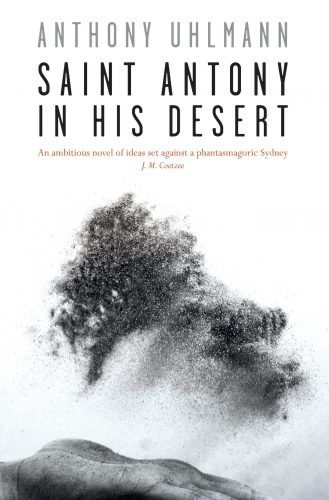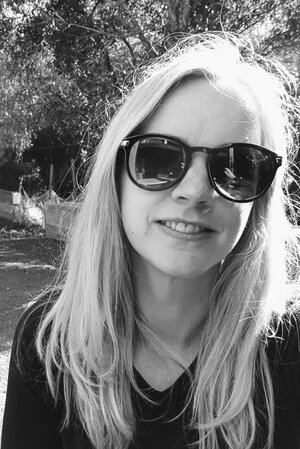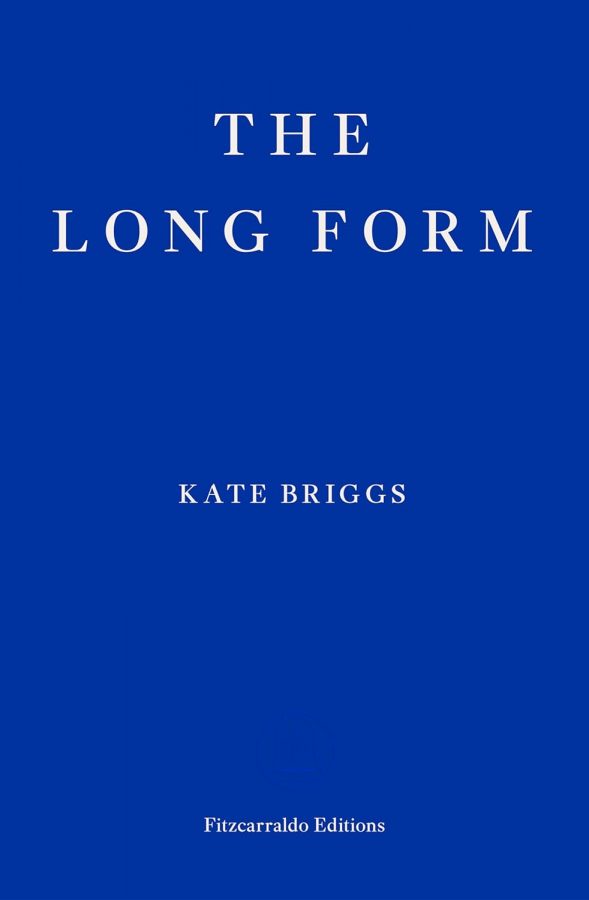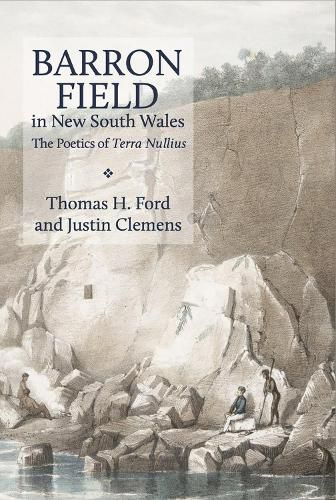Anthony Uhlmann has long been interested in the philosophical function of literature – not only its capacity to contain philosophical discussion, but the formal unfolding of the literary work itself as a philosophical act. St Antony in His Desert, Uhlmann’s first foray into fiction, is an unapologetically cerebral book, incorporating a key debate in the early twentieth-century clash between philosophy and physics. The tripartite structure of the novel is prefaced by an editor’s foreword, penned by one ‘Anthony Uhlmann’ of Western Sydney University, which is where the author teaches. He has been sent an unfinished typescript – an account of philosopher Henri Bergson’s historic encounter with Albert Einstein – on the verso of which an apparently fictional story is written. The author of these two narratives, we are told, is a priest named Antony Elm, whose brief interjections are also inscribed here and there on the palimpsestic text. The package has been sent to our editor by a nurse working at a hospital in the Northern Territory, to which the priest, perhaps defrocked or disgraced, was taken following his failed attempt at a monastic retreat into the desert. Of Elm the author, we know little more than this. From the opening pages of St Antony – as we parse the editor’s foreword and orient our reading to the multilayered text described – it is clear that the novel’s philosophical preoccupations will inhere as much in its form as in its content.
The typescript recovered by the nurse and sent to ‘Anthony Uhlmann’ is a third-person account, objective in style and packed with historical detail, of the trip which culminated in Einstein’s much-anticipated appearance at a meeting of the Société Française de Philosophie in April 1922. He had been invited to the Société in order to present on his special theory of relativity, and there a profound intellectual confrontation took place. When Bergson, a preeminent philosopher of the concept of time, was called upon to contribute to the discussion, his arguments provoked Einstein’s emphatic statement that the philosopher’s time – as separate from the physicist’s time – simply did not exist. Bergson’s star has waned somewhat in the decades since and no doubt this confrontation, and its implications for the intellectual relationship between philosophy and physics, played a part in that decline. Yet if Uhlmann’s fragmentary, heterogenous text advances any unifying contention, it is for the value of complex ideas, their histories and their provocations, even when they have been superseded by advances in our understanding.
Uhlmann – or perhaps better to say Elm – does not take sides in the debate between physicist and philosopher, instead allowing different conceptions of time to percolate not only through the typescript but also through the fiction written on its underside. This narrative is the story of one night in the lives of Frederick and Charles, two young men from Canberra who travel to Sydney in the 1980s to meet with a connection in the alternative music scene. Frederick will emerge as the story’s protagonist, as Charles returns to their hotel room midway through the evening, sick from over-imbibing. Surreal, episodic, fantastical, peppered with philosophical discussions and rich ekphrastic description, it is this narrative thread which draws the reader in and impels them onward.
St Anthony the Great, sometimes referred to as the father of monks, was a third-century ascetic who retreated into the Egyptian desert to follow in the footsteps of Jesus. In his solitude he was thought to have been subjected to a series of temptations, depicted in Gustave Flaubert’s The Temptation of St Anthony – a source cited by Uhlmann – and brought to life in many notable artworks, several of which are described in detail when Frederick stumbles upon an exhibition in the window of the Sydney Mechanics’ School of Arts.
St Anthony and his trials function primarily as a literary device, as Uhlmann constructs from the story of Frederick and Charles a densely referential text. The figures of the centaur and the satyr find their doubles in Kheiron and Si Lenus, ex-students of the same Canberra Catholic school as Frederick and Charles, now members of the rock band Prototaxis. Kheiron is so named for the most prominent centaur of Greek mythology, known for his intelligence and healing powers, yet ultimately unable to heal his own fatal wound. In the mythology of St Anthony, the centaur initially appears with the satyr as a demon, or monster, yet ends by offering to show the monk the way to his destination. The Kheiron of Elm’s fiction is also a guide, by turns welcoming and provoking; he exposes Charles and Frederick to the sights and sounds of the city, chaperones them into the underground music scene, offers them hash, and treats them to a great deal of philosophical conversation. Gradually, the story of his own un-healing wound is revealed: the loss of a much-loved brother to suicide. Si Lenus – named for Silenus, a satyr in the myth of Dionysus – hovers at the edges of the narrative, seemingly uninterested in or unimpressed by the arrival of the innocents.
On their arrival in Sydney Charles has arranged a meeting with Triple J, to showcase new music coming out of Canberra, and it is at the radio station that he and Frederick meet Kheiron’s girlfriend Louve who, for Frederick at least, embodies the temptation of sexual desire. Louve might be the novel’s most fully-fleshed character, and certainly its most compelling; cast in a gendered counterbalance, she provides an empathetic, intuitive match for Kheiron’s tendency toward sophistry. Throughout the course of the evening, Frederick and Charles undertake an intellectual as much as a physical journey. At the radio station, Louve’s terminally ill mother confronts Frederick with ruminations on mortality; later, as he leaves with Charles, the doorman accosts them with a warning to resist the chaos of entropy, insisting that ‘Things have to be drawn together through force of will’. They catch a taxi and the driver tells them that ‘The question is the means through which you mean to arrive’, and goes on to denounce Foucault’s celebration of the Iranian revolution.
The night is a kind of discombobulating odyssey, a journey through ideas and subcultures that finally circles back on itself, as Frederick and Charles resume their companionship, and their guides retreat into the backdrop of a many-layered, many-voiced city. And in fact the city of Sydney, described in rich sensory and geographic detail, is as distinct a character within this fiction as any of its human protagonists. The shopfronts, the street fights, the dingy bars, the stretch of Crown entirely occupied by brothels; the city, like the text, is a palimpsest. An ‘edit’ to the urban landscape itself is made visible on the page, when a phrase describing Barangaroo through the lens of colonial history is literally erased – struck through – and replaced by a reference to its significance as a Cadigal bora ceremonial ground. While this rewriting, or writing-over, only happens once, it suggests a certain textual malleability, an act of intervention on the part of the author – Antony Elm? Anthony Uhlmann? – which adds another layer to the esoteric structure of the whole.
Interspersed from time to time between sections of the typescript and the story written on its verso, are brief interjections – commentaries, reflections, even exclamations – from Antony Elm, in his cave by the Ochre Pits in the Northern Territory desert. Unlike the physical edit mentioned above, these interjections form their own semi-continuous textual strand, distinguished by font. Their relationship to the two central narratives is never made entirely clear; sometimes they seem contiguous with the story of Frederick and Charles, at other times unrelated to what has come immediately before, or what follows. Layerings of reference and intertextual exchange occur in overt and hidden ways – as Frederick and Charles walk the streets of Sydney, ‘A seminarian, visiting the presbytery of St Mary’s, slips out the back door unnoticed’. Antony, half-mad in his solitude, envisions a scene into which Frederick and Charles have just stumbled: ‘I imagine a man in an alley in Sydney’, he says, ‘perhaps I have seen one.’ Occasionally Antony’s annotations not only comment on the apparently fictional text he has written, but contradict or affirm details described, leading us to ask whether we are reading fiction or memoir; or indeed something else.
As the recipient of Elm’s layered manuscript, and author of the editorial foreword, ‘Anthony Uhlmann’ guides us to read typescript, story and commentary as one, professing his interest in ‘juxtaposition and non-relation in literature’. The connection between the novel’s different threads, and the degree to which they are in conversation with one another, will remain ambiguous. They are, for the most part, thematically separate, yet every now and again the interspersing of extracts suggests a relationship of intercourse or exchange between them. How reliable is the provenance of this manuscript? Uhlmann confesses that he has been unable to track down either the priest-author, or the nurse who sent him the package. Is it a hoax? Does it matter? The way in which we read a text like St Antony – deliberately constructed as it is to engage with and enact theoretical ideas about the function of literature – will depend upon our own points of reference, our expectations of textual integrity or internal consistency. How do we read the editorial foreword, or even the simple separation of font types? What cultural knowledge do the names of characters carry for us? The novel asks that we as readers consider how its different strands might be pieced together: whether we choose to read it as a narrative whole; a dual text whose strands are separate but for their proximity; or simply the fragmented fever dream of a starving man in his desert.
The human experience of time – la durée – was of primary importance to Bergson’s philosophy, and throughout the text of St Antony the way in which time is represented shifts both within and between the separate narrative strands. In contrast to the dry historical detail with which Elm recounts Einstein’s visit to Paris, from his arrival by train to the meeting of the Société Française, Frederick’s perception of and participation in events, encounters and conversations shapes our understanding of their duration and significance. We sense the distortion of his perceptive faculties as he smokes hash throughout the evening, first with Kheiron then with Louve. When two young women come to join the unworldly Frederick and Charles at their table in a bar,
The time that follows extends into a space between moments that is barely perceptible externally, but, when lived, inspires terror and vertigo.
Whole stretches of the night are dispensed with in a paragraph or sentence, as Frederick stands external to them; by contrast, a momentary scene which has caught his attention, or a brief exchange with Louve, slows and stretches so we might savour the minute detail of her expression, or the satisfying sound of her dress rustling.
The interwoven stories of Frederick and Charles, Bergson and Einstein, and of Antony in his desert, not only explicitly address divergent and competing perceptions of time and causality but incorporate them into a multi-layered formal experiment, as each raises questions regarding their relation or non-relation to one another. The momentousness of the disagreement between Bergson and Einstein – a paradigm shift in the conceptualisation of time – is occasionally submerged in the multi-layered textual structure. Elm professes to have embarked on his writing project (or projects) in order to ‘draw out how there could be more than one kind of thinking and that even when “wrong” there was something true in carefully imagined ideas’.
Reading the transcript from 6 April you feel a tension, not so much between individuals but within thought itself, which strains to cope with the possible interpretations of a proper understanding of the meaning of the theory of relativity.
Elm believes himself to have failed in his ultimate aim for the typescript, as in his monastic retreat (he is close to a campground, regularly gathering water from the taps there, and is visited by a park ranger), and with this in mind we may read the novel’s loss of narrative momentum as deliberate. Despairing of his magnum opus, Elm writes that he ‘once believed it was worthwhile trying to trace lines of meaning’; it is for readers of this thoughtful, original work to see for themselves how he – or indeed Uhlmann – has done so.







